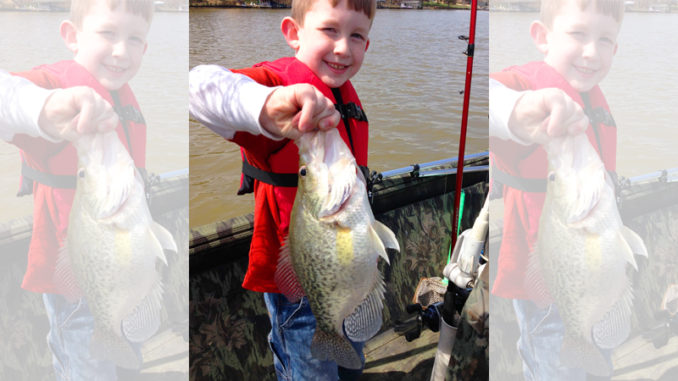
Crappie are feeding heavily
David Diggs of Norwood, N.C., said October is a great time to catch Lake Tillery’s big crappie.
“Anglers who find the thermocline with their sonar units will have the most success,” said Diggs, of David Diggs Hunting & Fishing Supplies. “The fish are feeding up for the winter and ready to bite.”
The thermocline is a layer of water between the warmer, mixed layer at the surface and the cooler, deeper layer. The layer near the bottom usually does not contain enough dissolved oxygen to support fish. The thermocline serves as a liquid barrier between the two layers. And it supports large numbers of suspended fish.
“Light conditions influence suspending fish, too,” said Diggs (704-690-0033). “On cloudy days, you may be fishing in 25 feet of water, but the crappie are suspended only 3 to 5 feet beneath the surface. On sunny days, the light conditions will push the fish deeper. But they won’t go all the way to the bottom because of oxygen-poor waters.”
Diggs cautions fishermen not to get discouraged in their search for crappie.
Taking time to find the fish is worth the effort
“It takes time to find the fish. But once you locate them, the time will be well spent,” he said. “You might also have to cope with fall turnover. That’s when weather conditions can overturn and mix all the water in the lake. The quick change slows the bite.”
Turnover frees fish confined to the thermocline to move to other depths. This makes it tougher to find and catch them, but it usually lasts only a week.
Diggs trolls at 1.5 mph or less to locate crappie. He sets out poles 8 to 16 feet long mounted on the front, back and sides of his boat. He uses a combination of long lines, tight lines and free lines with some of the lines employing double rigs. To troll deeper, he tilts some of his rod tips towards the water while the others remain upright. He spools his spinning reels with 6-pound fluorocarbon.
To sample various depths, he uses 1/16- and 1/32-ounce jigs. In clear water, he favors silver, Tennessee shad and John Deere green. In dark water, he uses dark blue and chartreuse. He often tips the jigs with minnows.
After he catches a few crappie at a certain depth, Diggs adjusts his spread to make his other baits run at that depth.
“Crappie look up to feed, so run your baits slightly above the fish,” said Diggs. His productive trolling grounds include Jacobs Creek, the Steel Bridge and the mouths of deep coves.”




Be the first to comment